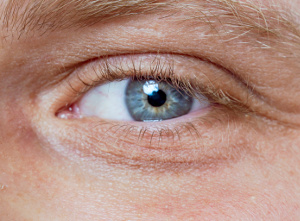Selenium helps prevent age-related cataracts
 Cataracts is one of the leading causes of vision impairment and blindness. The risk is increased by old age and diabetes. According to a new study that is published in Frontiers in Nutrition, a relatively high selenium intake can protect against the disease. The scientists mention that because of selenium’s unique antioxidant properties this nutrient protects the cells in the eye and in other places against free radical damage and oxidative stress.
Cataracts is one of the leading causes of vision impairment and blindness. The risk is increased by old age and diabetes. According to a new study that is published in Frontiers in Nutrition, a relatively high selenium intake can protect against the disease. The scientists mention that because of selenium’s unique antioxidant properties this nutrient protects the cells in the eye and in other places against free radical damage and oxidative stress.
An estimated 16 million people worldwide suffer from cataracts. The disease occurs when proteins and fibers in the lens begin to break down, causing hazy or cloudy vision. It normally takes several years for cataracts to develop, and it can affect one or both eyes.
The aim of the new study was to investigate the relation between the intake of dietary trace elements and the risk of developing cataracts. The scientists collected data from a large American population study called NHANES (National Health and Nutrition Examination Survey) from 2001-2008. A total of 7,525 participants aged 50 years or older took part in the study. Men and women were included, and there was a wide representation of different races/ethnicities. All participants were evaluated with regard to their intake of iron, zinc, copper, and selenium. They were divided into subgroups and screened. Afterwards, the scientists used different analysis methods to assess the link between trace element intake and the risk of developing cataracts.
Surgical therapy for cataracts and prevention with selenium
Normally, cataracts are treated in a surgical procedure that involves replacing the lens. Vision gradually returns after that. However, in rare cases, different post-operative complications may occur, for example retinal detachment, bleeding from the eye, infections, chronic iridocyclitis, and chronic corneal disease. The researchers behind the new study therefore mention the importance of diet and lifestyle as part of the prophylactic strategy.
Ageing is the most common cause of cataracts but the disease can also be a triggered by diabetes, smoking, and overweight. All of these conditions are characterized by oxidative stress, which is an imbalance between potentially harmful free radicals and protective antioxidants. Selenium is part of the two antioxidants complexes, GPX (glutathione peroxidase) and TrX (thioredoxin reductase), which are able to delay the onset of cataracts by protecting the eye lens against oxidative stress. Selenium also supports different selenoproteins that are important for things like the energy turnover, formation of new lens cells, and epithelial cell metabolism. Studies of humans and animals suggest that supplementation with organic selenium forms such as selenomethionine and selenocysteine has a much better effect on lens health than supplementation with inorganic selenium forms such as selenium selenite. Moreover, selenium yeast contains many different organic selenium species similar to the variety of selenium types you get from a balanced diet with many different selenium sources.
Higher selenium intake appears to give the best effect because this effectively saturates the different selenium-containing enzymes (selenoproteins) in the body. We have the largest concentrations of selenium in our liver, muscles, and kidneys, while there is relatively little selenium in our eye lenses. Still, it is important that all organs and tissues get the selenium they need, either from food or from supplements.
Selenium is of utmost importance to our general health, and the scientists behind the new study recommend that older people increase their selenium intake in any case, not just for the sake of preventing cataracts.
Free radicals, oxidative stress, and cataracts
- The reason why we experience increased oxidative stress in old age is that the cellular energy turnover becomes less efficient and generates more free radicals
- The free radical burden is made worse by smoking, medicine use, and poisonings
- Diabetes and overweight are both characterized by chronic low-grade inflammation, which also adds to the free radical load
- Oxidative stress is when protective antioxidants are outnumbered by harmful free radicals
- Selenium supports different antioxidants that protect the cells in our eye lenses, among other places
How to get enough selenuim
In the United States, it is relatively easy to get enough selenium because there is plenty of the nutrient in the soil. In places such as Europe, however, the farmland is low in selenium, which makes it difficult to get enough dietary selenium. Here, supplementation with a high-quality selenium preparation may be useful for the sake of preventing cataracts and other age-related diseases.
References:
Baiwei et al. Selenium intake help prevent age-related cataract formation: Evidence from NHANES 2001-2008 Frontiers in Nutrition 2023
Jing Huang et al. Selenium Status and Its Antioxidant Role in metabolic Diseases. Oxidative Medicine and Cellular Longevity. 2022
Search for more information...
- Created on .








